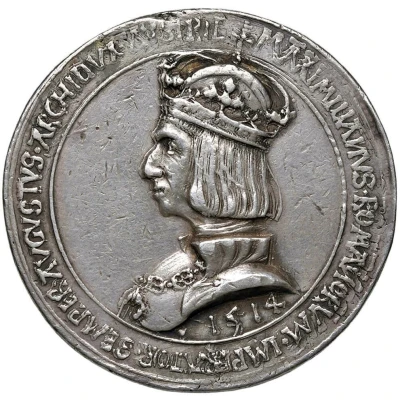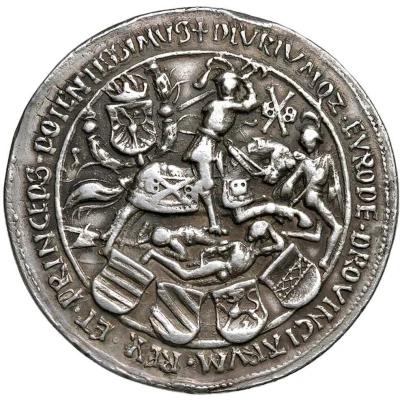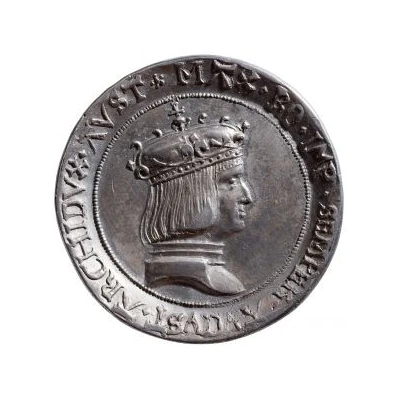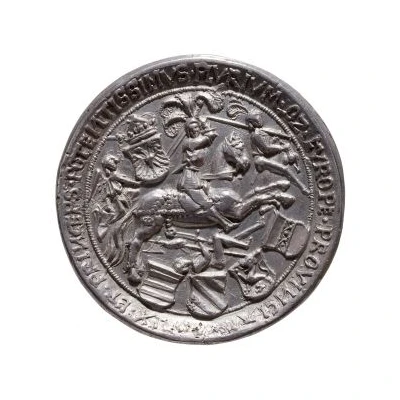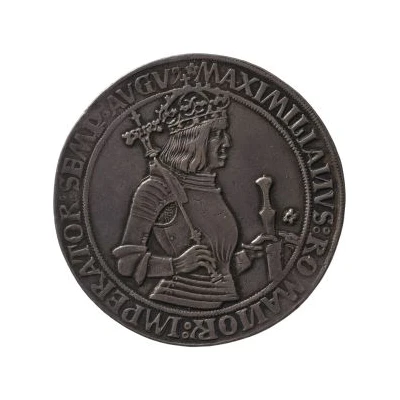
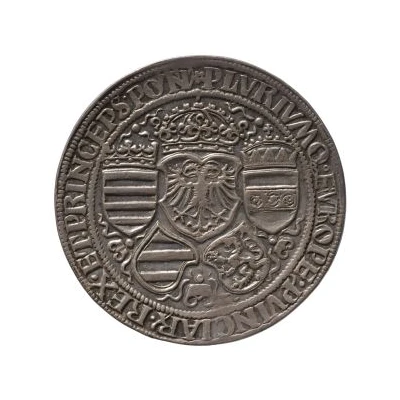

1 Guldiner - Maximilian I. Antwerp ND
1517 year| Silver | 30.88 g | 43 mm |
| Issuer | Austrian Empire |
|---|---|
| Emperor | Maximilian I (1486-1519) |
| Type | Standard circulation coin |
| Year | 1517 |
| Value | 1 Guldiner |
| Currency | Thaler (1520-1754) |
| Composition | Silver |
| Weight | 30.88 g |
| Diameter | 43 mm |
| Shape | Round |
| Technique | Hammered |
| Demonetized | Yes |
| Updated | 2024-10-04 |
| Numista | N#422545 |
|---|---|
| Rarity index | 97% |
Reverse
Five coats of arms: Crowned Imperial arms (double-headed eagle) in the center, crowned arms of Old Hungary on the left, arms of Austria with archducal hat on the right, below them the arms of Burgundy and Styria; interspersed with the collar of the Order of the Golden Fleece
Script: Latin
Lettering: ✿ PLVRIVMQ . EVROPE . PVINCIAR' . REX . ET . PRINCEPS . POT/N9.
Translation: Maximilian, King and Prince of many provinces of Europe, potent
Comment
The only difference to the Hall mint coin is the flower to the right of the sword.
Maximilian's first wife was Mary of Burgundy
Burgundy had a significant presence in Antwerp during the reign of Maximilian I. After Maximilian's marriage to Mary of Burgundy in 1477, Antwerp became an important center for the Burgundian Netherlands, which included territories such as Flanders, Brabant, Holland, and Hainaut. Antwerp, located in Flanders, was one of the wealthiest and most influential cities in Europe at the time, known for its thriving trade and commerce.
Interesting fact
The 1 Guldiner coin from the Austrian Empire, minted in 1517 during the reign of Maximilian I, features an image of the Holy Roman Emperor on horseback on its obverse side. This design was meant to symbolize the power and authority of the Holy Roman Empire, which was a powerful and influential political entity in Europe during the time.
